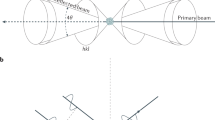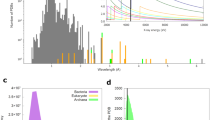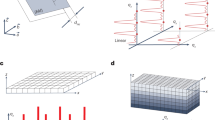Abstract
SEVERAL workers have recently discussed the diffuse spots which often appear in Laue X-ray crystal photographs and do not belong to the Laue pattern proper. Thus Preston has given1 illustrations of the spots in a number of cases and concludes that “the diffuse spots can be explained by the thermal vibrations of the lattice which break the crystal up into groups, consisting probably of an atom and its twelve neighbours. The thermal vibrations cause the interatomic distances to vary slightly from one group to another so that new diffraction maxima, characteristic of the group of atoms, are produced”.
This is a preview of subscription content, access via your institution
Access options
Subscribe to this journal
Receive 51 print issues and online access
$199.00 per year
only $3.90 per issue
Buy this article
- Purchase on Springer Link
- Instant access to full article PDF
Prices may be subject to local taxes which are calculated during checkout
Similar content being viewed by others
References
Proc. Roy. Soc., July 1939.
Phys. Rev., 57, 597 and 795 (1940).
NATURE, 146, 332 (1940).
Current Science, April 1940.
Rights and permissions
About this article
Cite this article
BRAGG, W. The Extra Spots of the Laue Photograph. Nature 146, 509–511 (1940). https://doi.org/10.1038/146509a0
Issue Date:
DOI: https://doi.org/10.1038/146509a0
This article is cited by
-
Diffuse Reflexion of X-Rays
Nature (1941)
-
Diffuse Spots in X–Ray Photographs
Nature (1941)
Comments
By submitting a comment you agree to abide by our Terms and Community Guidelines. If you find something abusive or that does not comply with our terms or guidelines please flag it as inappropriate.



